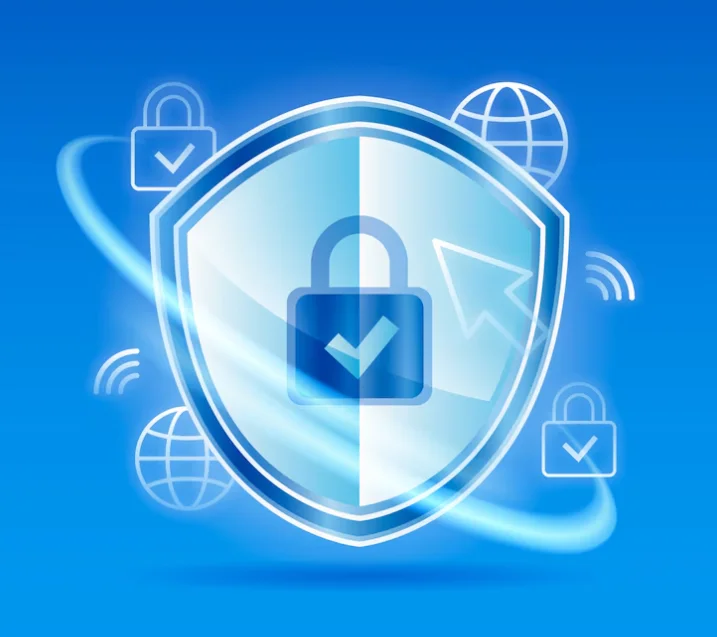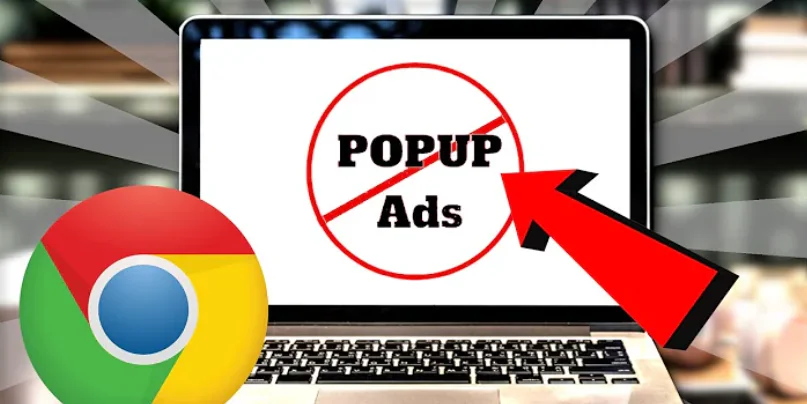Touch VPN Review: Free, But Is It Really Safe?

Touch VPN is a new player in the VPN market. What makes it particularly interesting is that you can use it without paying a dime.
On its website, Touch VPN promises to “protect your data from hackers,” and allows you to “surf the web anonymously.” However, the painful absence of useful information on the website and the lack of paid subscriptions made us question its legitimacy.
Does Touch VPN have the right touch? Is it really safe and trustworthy to use? And is it any good?
This Touch VPN review will provide that information. The following table of contents allows you to jump right into the section you’d like to read.
Let’s get started!
What is Touch VPN?
Touch VPN Inc. was founded in 2014. In 2015, Touch VPN was acquired by AnchorFree, the Goldman Sachs-backed security company, which also owns Betternet and Hotspot Shield.
Speaking about the acquisition at that time, Craig Vachon - AnchorFree’s Corporate Development Leader optimistically said: “We envision that the combination of our companies’ technologies may make other VPN companies’ technology obsolete.”

Then, in 2019, AnchorFree rebranded to Pango, which is listed at 1800 Seaport Blvd, Redwood City, CA 94063, US. That means Touch VPN is a US-based VPN provider. This is actually bad news, because the US has extremely intrusive privacy laws and is the primary member of Five-Eyes intelligence-sharing apparatus.
Server Network Review

Touch VPN has 5,900 servers in 90 countries, mainly in North America and Europe. These include Brazil, Ukraine, Hong Kong, Denmark, and France. However, the free version restricts users to several server locations, necessitating an upgrade to unlock the full range.
Inconsistencies in Server Availability
A notable issue is the inconsistency in the number of available locations between native apps and browser extensions. The Chrome and Firefox extensions provide access to 7 locations, the Edge extension offers only 2, while the Android app has 21 locations available.
Even after upgrading to a paid plan, these inconsistencies still remain. The Android app consistently displays more server locations than the browser extensions, compelling users to switch between extensions during usage. This leads to both tiresome and inefficient.
Website Information Discrepancies
Additionally, Touch VPN’s website shows conflicting information about its server locations. In bold, it claims to have servers in 30+ countries, but in smaller font, it states that its servers are spread across 90+ countries. This inconsistency raises questions about the overall accuracy and reliability of the site’s content.
Is TouchVPN Safe to Use?
Before discussing how to use TouchVPN, let’s consider a crucial aspect: safety. While it is among the best free VPNs, our honest review delves into online security protocols, revealing potential issues.

SSL Encryption
Touch VPN uses SSL encryption, which is an industry-standard level of security for securing data during transmission. While SSL encryption is used, leading VPN services such as NordVPN and ExpressVPN utilize 256-bit encryption, which is more robust than SSL regarding privacy and security.
SSL encryption does not provide end-to-end protection; rather, it involves decrypting and re-encrypting data as it passes through the VPN server. This process allows the provider to monitor your online activities.
In contrast, AES-256 encryption ensures complete anonymity by preventing the provider from accessing your data, offering a higher level of security and privacy.
OpenVPN And Catapult Hydra
Touch VPN has some issues with being transparent about its protocols. The service claims to support OpenVPN and Catapult Hydra, but when tested on Windows and iOS devices, these protocols were unavailable. It seems they might be exclusive to premium users.
Catapult Hydra is a special protocol designed to improve speed and security, but it doesn’t perform as well as WireGuard or Lightway.
While reliable, OpenVPN is unavailable to iOS users, and whether the iOS app employs PPTP or Hydra is uncertain. The lack of transparency and potential misinformation raise concerns about the accuracy of the information provided.
Split Tunneling in The Premium Version
Another premium feature is split tunneling, which allows users to opt for which part of the traffic is routed through the VPN tunnel and which is not. This feature offers some degree of customization.
However, free users are left with a rudimentary VPN client that lacks advanced functionalities. Even services like Hotspot Shield provide more features in their free versions, despite limitations such as a single VPN location.
Block Ads or Tracker Blocker in The Premium Version

The premium version of Touch VPN offers additional features such as Fireshield, which blocks ads and tracker blockers. This feature is available on mobile devices and aims to reduce online advertisements and pop-ups. However, considering the overall quality of the service, it is advisable to choose a superior VPN with a free trial rather than paying for this low-quality Touch VPN’s premium version.
While TouchVPN can be useful for casual use, it might not be the best choice for users who prioritize privacy and security. For more robust protection, investing in a reputable paid VPN service is advisable. If you decide to use TouchVPN, be aware of its limitations and potential risks.
Pros and cons of using Touch VPN
Pros:
-
Completely free of charge
-
Easy to use
-
Unlimited devices with unlimited bandwidth
Cons:
-
A limited number of servers and locations
-
Slow speeds
-
Weak logging policy
-
Torrenting not permitted on any servers
-
No advanced privacy features
-
Under 5-Eyes jurisdiction
-
Lack of customer support
How to Use Touch VPN
Touch VPN can be used in a lot of different ways. But now that you’ve tried most of the VPN-like programs, here are the easiest steps you can take to use it:
Step 1: Head toTouch VPN’s official website for a quick download on Mac, Windows, or mobile (Android/iOS). You can check out user reviews and tutorials for insights.
Step 2: Navigate to the ‘Download’ the app. Before proceeding, you should review and agree to the company’s Terms & Conditions.
Step 3: Once you agree, Touch VPN auto-downloads. You can complete the process by creating an account with a username and password. Now, connect seamlessly to any VPN provided by Touch VPN. It’s that simple!”
Touch VPN usability
Official website
Touch VPN’s official website is clean and easy to navigate, including 4 main parts:
- About. Why should you choose Touch VPN?
- Platforms. Which platforms can Touch VPN work well with?
- Servers. How many servers and locations does Touch VPN offer?
- Feedback. What are people talking about Touch VPN?
We went hunting around its website for further information but quickly gave up. It is essentially one page of basic marketing with a few generic descriptions of its capabilities. And we believe that’s a pity, as beginners might need more to understand the company thoroughly.
Supported devices
Touch VPN is compatible with Windows, Mac, iOS, Android, Edge, Chrome, and Firefox. However, if you’re looking for a VPN service that you can use on your Smart TV, router, or Linux distro, you may need to look elsewhere.

Although Touch VPN supports limited devices, you can use it on as many devices as you want with no bandwidth limits.
Apps
If you’d like to use Touch VPN on your Android, iPhone, iPad, or iPod Touch, it’s easy to download and install the app in just a few clicks, with handy links on the website. Getting the Chrome browser extension is also equally easy.
Like most other VPN apps, Touch VPN comes with a location list, a “Connect” button, and a short menu. You can choose among its protocols (read below for more information). Besides, you’re able to activate its split tunneling feature, which lets a part of your traffic go through the Touch VPN tunnel, while some of your traffic connects directly with the Internet.
The Chrome extension has relatively few locations, including the US, UK, Canada, France, Netherlands, Germany, and Russia, but it has more power than you would expect. Once you tap “Connect,” a new screen will appear with options to block trackers, ads, cookies, malware, and WebRTC leaks. You can also tell Touch VPN to automatically connect whenever you access specific sites, while you can specify other websites to be accessed via your regular connection.
Overall, the installation process is easy, but the Android version contains a number of ads and a very annoying habit of asking you to give them a good review that might drive you insane.
Touch VPN performance
Servers and locations
If you love traveling and hope to ensure your digital protection in countries whose names you can’t even spell, Touch VPN is not for you. It only has 25 servers worldwide in about 30 countries.
Surely, it provides you with the bare minimum of locations in the most populated countries. This ensures most users’ satisfaction, but it is far from offering the flexibility and coverage that other premium VPN providers do.
Besides, Touch VPN offers only Shared IPs, which is great for anonymity, but they don’t provide Dedicated IPs in any of their servers. Plus, the service doesn’t include SmartDNS, which is a significant letdown for streaming fans.
Many users doubt that the company uses fake VPN servers. This means even if you are connected to a specific server in a particular location, the computer client will eventually show you the information for another location. So, it is tough to trust Touch VPN if this sort of thing happens.
Speed
We have to admit that our expectations were not exactly high when we started carrying out this Touch VPN review. Its speed test result may not be as impressive as that of other premium providers, as it’s free.
Speed tests conducted by specialists in the field have proved that our thought is right. The upload speed went to a maximum of 6.68 Mbps on the US server, while the download speed registered a speed of 24.27 Mbps. As for the Netherlands server, the upload speed capped at 32.80 Mbps, and the download speed was 25 Mbps. The ping (the time taken for your request to respond and receive an actual response) was 43.
You can compare these results with other VPN services and see the clear-cut differences. Touch VPN is clearly not an online security provider aimed at those who are looking for swiftness or instant server responsiveness. Therefore, if you are looking for a service that allows you to stream HD videos or even more naively, to stream Netflix, you’ll need to look elsewhere.
Streaming
Looking for Netflix and chill? You might be disappointed!

Touch VPN’s limited server selection doesn’t allow us to access Netflix or other popular streaming sites. If you want a VPN that will give you access to streaming sites from elsewhere in the world, don’t put your trust in Touch VPN.
Touch VPN security
There is no way we can recommend Touch VPN to anyone who takes their online privacy seriously.
Touch VPN uses the PPTP protocol, which is insecure, easy-to-crack, and outdated at this point. The only advantage of using PPTP is it often performs faster than other protocols. On its app, you can alternate between IPSec and Hydra TCP protocols. You can learn more about protocol types in this blog post.
There’re also barely any additional security features, which is disappointing. The lack of a VPN kill switch feature means that if the VPN connection were to drop for any reason, your true IP address would be visible to your Internet Service Provider (ISP), potential hackers, and snoopers.
There’s a WebRTC blocker and ad/ malware blockers integrated into the app, but unfortunately, there is no way of knowing how effective these are. Although we appreciate the level of honesty and transparency demonstrated by Touch VPN regarding encryption and security, the fact is that the methods they use are outdated and far more insecure than those offered by other VPN providers.
Touch VPN privacy and policies
Jurisdiction
As mentioned above, Touch VPN is based in the US, one of the least privacy-friendly countries in the world. This makes it subject to intrusive surveillance laws and intelligence-sharing agreements.
Even more concerning is that Touch VPN admits it will “share your personal information and other information in special cases if we have good reason to believe that it is necessary,” which is actually the last thing you want to hear from a VPN company. It goes on saying that it “cannot guarantee” that its system will be “absolutely safe,” which is once again significantly concerning.
Logging policy
The information Touch VPN collects may contain, but isn’t limited to:
- Your IP address and browser type
- Any websites you visit and time spent on those sites
- Access dates and times
- A unique device identifier (e.g., mobile number if connecting from a mobile phone)
Their policy states that they don’t share your private data unless it is consented by you or required by laws or court order. In addition, Touch VPN shares your anonymous information with third parties for research, marketing, and analytics purposes.
In short, we think Touch VPN’s logging policy is not strong enough, which seems to defeat the whole purpose of subscribing to a VPN service in the first place.

It is worth bearing in mind the phrase, “If a product is free, you’re the product.” This means if a product is free to use, it is usually your data that’s making the company money. If you are looking for a free VPN option, keep this in mind!
Torrent policy
We would also advise torrenters to find solutions elsewhere, due to the fact that Touch VPN doesn’t support torrenting. Free services often restrict their offering in this way because of the risk it poses to their business for illegal downloading from many users.
Also, as stated above, the company lacks the kill switch feature, which puts your identity at the risk of being exposed in the event your VPN connection drops.
Touch VPN customer support
Touch VPN offers two types of customer services: email and online resources.
The FAQ section on its website is a drop-down menu, but each question results in the same and irrelevant duplicate answer. While Touch VPN states that its apps are so easy to install that it doesn’t need to provide any setup guides, it should show available ways of downloading for beginners.
The company is also contacted via email; however, many users report that the responses are not quick enough, vague, and lack detail.
Alternatives to Touch VPN
CyberGhost VPN
In today’s world, privacy is a major concern, especially as much of our lives are spent online, leaving us vulnerable to unwanted eyes. That’s where tools like CyberGhostVPN come in.
CyberGhost VPN is a service that protects your online privacy and security. It encrypts your internet traffic and routes it through a remote server, hiding your actual location and IP address. This makes your browsing activity more anonymous and helps you access websites that might be restricted in your region. CyberGhost VPN also offers features like automatic Wi-Fi protection and a kill switch to ensure your connection is always secure.
Compare CyberGhost VPN and Touch VPN
CyberGhost VPN and Touch VPN are both popular VPN services, but they differ in several key aspects. CyberGhost VPN offers a wide range of features including dedicated servers, WiFi protection, and streaming optimization, while Touch VPN provides basic VPN functionality with encryption and IP masking. CyberGhost boasts a larger server network, potentially providing better performance and more server location options.
In terms of privacy, both services claim to prioritize user privacy, although users may want to review each service’s specific privacy policy. Ultimately, the choice between CyberGhost VPN and Touch VPN depends on individual preferences, such as desired features, budget, and performance requirements.
Freegate
Freegate is innovative software designed to counter censorship and provide fast and secure internet access. Developed by Dynamic Internet Technology Inc., a leading company in censorship-circumvention technology, Freegate offers users a convenient solution for accessing unrestricted internet content.
Compare Freegate and Touch VPN
Freegate and Touch VPN are both free options for bypassing restrictions and potentially anonymizing your browsing but with some key differences. Freegate focuses on censorship circumvention and might be better for users in restricted regions. Touch VPN is simpler and easier to use, but may have limitations on server selection and potential security concerns due to being free.
Consider Freegate for bypassing censorship and Touch VPN for basic privacy on unsecured Wi-Fi, but be aware of potential drawbacks in both.
The final verdict
So, do we recommend Touch VPN?
The answer is: Not really.
Although its $0 price tag might lure you in, you should be careful with your choice. The moment you sign up, Touch VPN can log your private information and keep it to sell to third parties.
If you think we’ve left anything out in this Touch VPN review, please let us know. We recommend that you keep updated with our VPN review series to find the right service to settle down for more information.






![Top 20+ Must-have Shopify Apps for 2025 [Free & Paid] - Mageplaza](https://cdn2.mageplaza.com/media/blog/must-have-shopify-apps/top-must-have-shopify-apps.png)
![[2025 Updates] Top 10+ Upsell Apps for Shopify - Mageplaza](https://cdn2.mageplaza.com/media/blog/best-upsell-shopify-app/cover.png)
